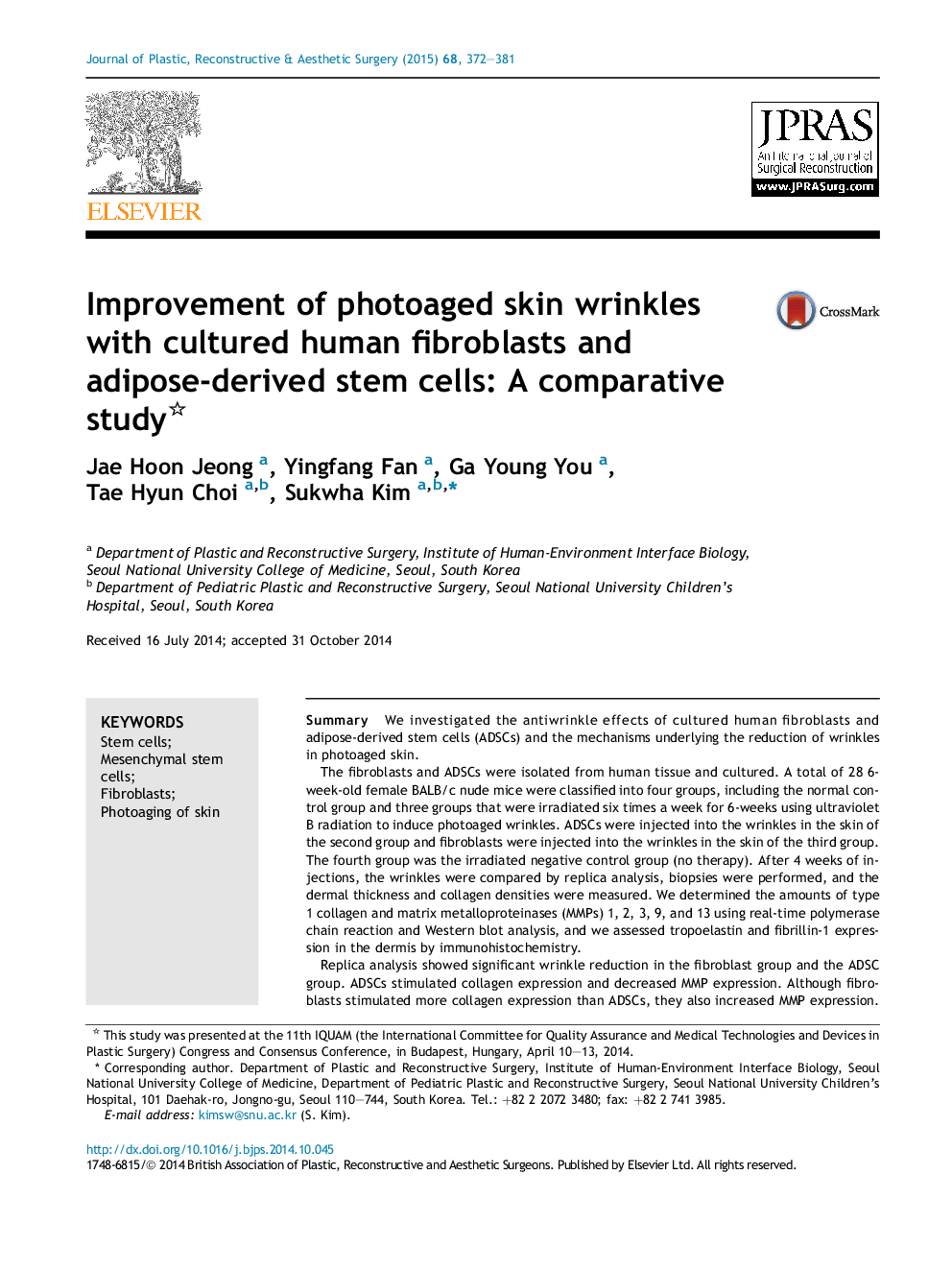| Article ID | Journal | Published Year | Pages | File Type |
|---|---|---|---|---|
| 4117281 | Journal of Plastic, Reconstructive & Aesthetic Surgery | 2015 | 10 Pages |
SummaryWe investigated the antiwrinkle effects of cultured human fibroblasts and adipose-derived stem cells (ADSCs) and the mechanisms underlying the reduction of wrinkles in photoaged skin.The fibroblasts and ADSCs were isolated from human tissue and cultured. A total of 28 6-week-old female BALB/c nude mice were classified into four groups, including the normal control group and three groups that were irradiated six times a week for 6-weeks using ultraviolet B radiation to induce photoaged wrinkles. ADSCs were injected into the wrinkles in the skin of the second group and fibroblasts were injected into the wrinkles in the skin of the third group. The fourth group was the irradiated negative control group (no therapy). After 4 weeks of injections, the wrinkles were compared by replica analysis, biopsies were performed, and the dermal thickness and collagen densities were measured. We determined the amounts of type 1 collagen and matrix metalloproteinases (MMPs) 1, 2, 3, 9, and 13 using real-time polymerase chain reaction and Western blot analysis, and we assessed tropoelastin and fibrillin-1 expression in the dermis by immunohistochemistry.Replica analysis showed significant wrinkle reduction in the fibroblast group and the ADSC group. ADSCs stimulated collagen expression and decreased MMP expression. Although fibroblasts stimulated more collagen expression than ADSCs, they also increased MMP expression. Overall, the ADSC group showed higher collagen density and had better outcomes in the tropoelastin and fibrillin-1 assessments.Both cultured fibroblasts and ADSCs could play an important role in wrinkle reduction despite differences in their mechanisms of action.
